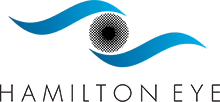Laser Resurfacing
The medical procedure known as laser resurfacing is categorized in a group of treatments known as photo rejuvenation. In the 1990s, Thomas L. Roberts III invented and introduced the technique using CO2 lasers. These types of treatments use various types of devices that target the skin to lighten or eliminate skin conditions. Devises include lasers, as well as photodynamic or intense pulsed light therapy. They can be used for removing a range of photoaging effects, including textures, spots, and wrinkles. Controlled wounds are induced, which prompts the skin to rejuvenate and develop new skin cells, reversing the symptoms of photoaging. Although, it only works to an extent to remove unsightly damage.
The method of laser resurfacing is a commonly sought-after approach to improving a range of skin problems today. This form of laser surgery works by disassociating molecular bonds, which can be very effective towards reducing or in some situations, eliminating sun damage, wrinkles, scarring (both surgical and acne scars), solar lentigines, telangiectasias, actinic keratosis, even stretch marks can be lightened.
For those looking to for their best appearance, may be slightly overweight, or just wanting to tighten skin up in the treated area then liposuction can be used in combination with laser resurfacing for smoothing and tightening contours when excess fat has been removed. This greatly reduces chances of unsightly scar tissues from a common surgical procedure with an aim of looking your best.
What makes it work?
The entire concept behind the technique is the fact it can be used in various forms. Ablative, vaporizing tissues which trigger the body’s natural healing process from the new wounds. On the other hand, non-ablative approach is less aggressive, and the skin remains intact.
Lasers also enable surgeons the ability to customize surgical procedures, targets, even outcomes based on various factors, including the patient and the area on the face being treated. This includes methods of dermabrasion, chemical peels, among others. Therefore, it is a great way to get rid of unsightly scarring around the eyes, nose, mouth, and forehead caused by a long list of situations, from acne to weight gain or surgical operations.
Generally, surgeons utilize either a 10,600 nm CO2 laser or 2940 nm Er:YAG laser for treating patients. Initially during the introductory phase of the 1990s, CO2 lasers were the only available option, but thanks to the advanced medical field both surgeons and patients have options today. However, they both have the ability to treat conditions, such as age spots, sun damage, and deep rhytids.
The basic concept behind the procedure is that it heats up the deeper parts of the dermis, stimulating the fibroblasts to create new collagen. Meanwhile, the newly developed collagen aids in producing elastin to assist in increasing the skins thickness and turgor, therefore tightening the area.
Over the years, a range of modes have been designed and implemented, including plasma devices and Nd:Yag laser devices. Although, time and studies have indicated there may be increased risks of scarring and hypopigmentation occurring from the CO2 devices, compared to that of the more modern Erbium based devices. The reason for this is believed to be a higher rate of coagulation that occurs from the natural heat produced by the CO2 wavelengths.
Things to Look For
If you are researching surgeons in or around your area, you want to ensure they have plenty of experience using their devices. The more experience and reputable reputation they have, the less risk of complications or unforeseen situations. However, there could always be some risks during any medical treatment.
Additionally, if you’re wanting a certain type of laser device used, be it the old school 1990s CO2 powered devices, or the more modern type, you want to research which is used at the doctor’s office you’ll be visiting. If they do not use the type you desire, and you’re not willing to substitute with the other, search another location.
What It Can Treat
As discussed above, these treatments can be useful in targeting a list of skin conditions caused from different situations, both naturally occurring such as acne and stretch marks, to surgical or mild reconstructive procedures. Below are some other common concerns:
Sun Damage
This occurs simply from being excessive exposure to sunlight and UV lighting. For example, sun burns damage living tissues like the skin as it is a mild form of UV radiation burns.
Age Spots
Are you starting to notice various size spots on your body? These are referred to by many names, including age spots, livers spots, senile freckles, and others. They are simply unsightly blemishes that is caused from the body’s natural aging process, combined with years of UV exposure from the sun. They can appear a light brown to black, or in some cases red. Their more common in areas of the body exposed to direct sunlight, such as the face, hands, arms, shoulders, and even the scalp for those who are bald.
Rhytides
More commonly known as ‘Wrinkles’, these are ridges, folds or creases within the skin. Again, this is a natural process of the body aging, but it can be caused by other factors as well, including sleeping positions, or losing body mass. Wrinkles in the face, however, are commonly caused through habitual facial expressions, smoking, sun damage, poor hydration, etc.
Outcomes
As with any medical treatments, the overall outcome can be estimated patient to patient, but cannot be guaranteed. These estimates are based on various factors and the average outcome of those factors. For example, wrinkles caused from loss of body mass may be easier to reduce or eliminate compared to that of wrinkles caused by years (or decades) of smoking and facial expressions.
Additionally, the severity of the condition will be taken into consideration. For instance, mild sun damage vs. extreme sun damage, fine lines or wrinkles vs. deep wrinkles, small light brownish vs large black age spots. All of these factors can increase or decrease the final outcome.

